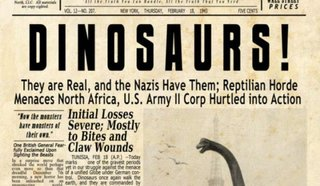Eszter Gantner’s Updates
Update #3 Content creation
In the previous essays I have reported about the interesting discussions with the students regarding the usage and application of digital tools in the teaching. We agreed on their usefulness and that these tools are indispensable from modern education. We discussed also the general impact of digital media on the education in general, moreover on their generation and on their everyday lives. It is generally well-known digital media has completely transformed 21st century society. This transformation has been so rapid and so widespread that it has launched an economic transition from an industrial age to an information-based Information Age. This also meant among many other new phenomena, that digital media has also allowed individuals to be active in content creation. Anyone with access to computers and the Internet can participate in social media and contribute their own writing, videos, and commentary to the Internet.This have led also to a sort of democratization of content creation as well as the creation of new types of content, like memes and blogs and many other). As Amanda Lenhart, Deborah Fallows and John B. Horrigan formulated it: “The maxim is true: Anyone can be a publisher on the Web and many Internet users are”.
However, and let me at this point to return to the discussions in our classroom (or virtual class room - alias video chatroom) – we acknowledged also the challenges of content creation especially regarding scholarly knowledge. Individuals are producing knowledge (content), but in many cases they also producing knowledge about “academic” issues and questions, which would be in a need of a complex analysis instead of often simplified explanations. Good examples are student-videos on YouTube explaining the reasons of WWII in 5 minutes.
Although it is in general great that, there is a possibility of content consumers being more involved in the generation and sharing of content. Also, the amount of user generated content has increased as well as the age and class range. Moreover, even academic content is much easier to be accessed, through publications, databases, libraries and so on.
But we are facing also such dangers as fake news or fake history. In the concluding discussion with the students - after identifying these phenomena – we developed fake history scenarios, in order to understand ho does this process emerge.
http://averypublicsociologist.blogspot.com/2017/02/fake-news-and-fake-history.html
TED-Talk
How we create content | Jon Savage | TEDxCapeTown
https://www.youtube.com/watch?v=LyXolOKqaBc
Sources:
Content Creation Online By Amanda Lenhart, Deborah Fallows and John B. Horrigan
http://www.pewinternet.org/2004/02/29/content-creation-online-2/
Newman, Nic (September 2011). Mainstream media and the distribution of news in the age of social discovery. Reuters Institute for the Study of Journalism




It is interesting to think that content creation can be so fluid and manipulated. On the one hand it could be a great opportunity to have student create content in an organic way. Using structures like fact checking and real research including comparison of multiple resources.
My students write report on a Photographer and when they can not find the information needed they have go direct. They have to have conversations with the artist (skype, instagram, twitter and facetime). This has been transformative for my students and to some extent the Photographers.
As Content Creation Online is heavily used in our daily lives and in the classroom it is interesting to think that we need to make our students the fact checkers of their own content as a new soft skill for the 21st Century (https://www.aeseducation.com/careercenter21/what-are-21st-century-skills).